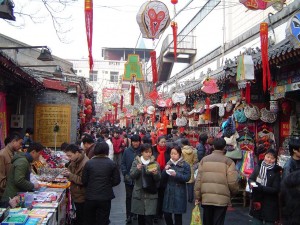 Leadership of China and its Central Bank are both ready to make another cut in interest rates as well as loosen restrictions on lending on concern that falling prices could trigger a surge in defaults on debt, job losses and business failures, said sources in the policy making process there.
Leadership of China and its Central Bank are both ready to make another cut in interest rates as well as loosen restrictions on lending on concern that falling prices could trigger a surge in defaults on debt, job losses and business failures, said sources in the policy making process there.
The surprise Friday cut in interest rates, the first in over two years, is a reflection of a change by Beijing in its course, which has prior persisted with modest measures for stimulus before deciding last week a bold monetary policy was needed to stabilize the second largest world economy.
Economic growth slowed to just 7,3% during the third quarter and policymakers worried it would soon dip under 7%, which is a rate that has not been since the onset of the financial crisis.
Leaders have change their view said one senior economist at a think tank for the government involved with internal policy.
The economists who did not want to release his name said the central bank shifted focus toward stimulus that was broad-based and were open to additional cuts as well as a cut in the reserve requirement ratio for the banking industry. The ratio restricts the amount of available capital to fund the loans.
China has cut the RRR at some banks during this year, but did not announce any reduction banking wide in the ratio in over 2 years.
The move on Friday, which cut the benchmark one-year lending rates to 5.6%, also came about due to concerns that local governments have struggled to manage high debt amidst reforms to their arrangement for funding, said the sources.
Top China leaders had resisted a cut in rates fearing it would fuel debt and bubbles in property while denting their credential for reforming.
Many economists in China have called for bolder actions regarding policy as recent data has shown that the economy is losing its steam during the final quarter of the year and consumer prices and inflation has fallen.
